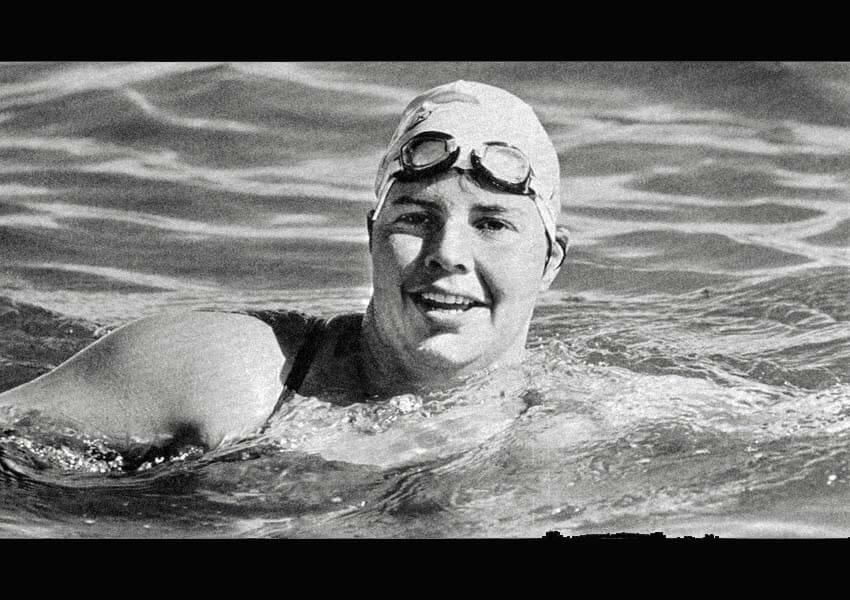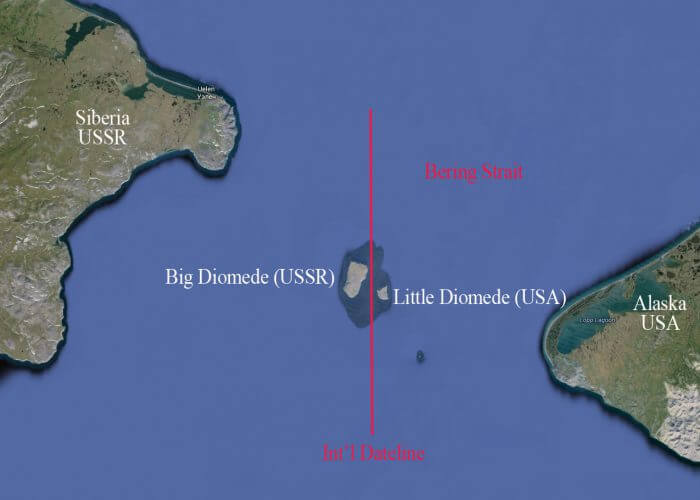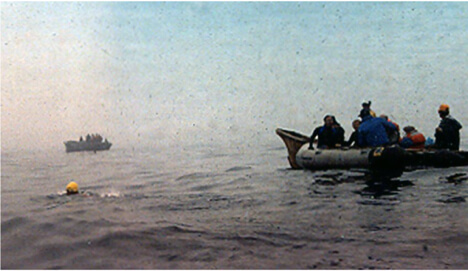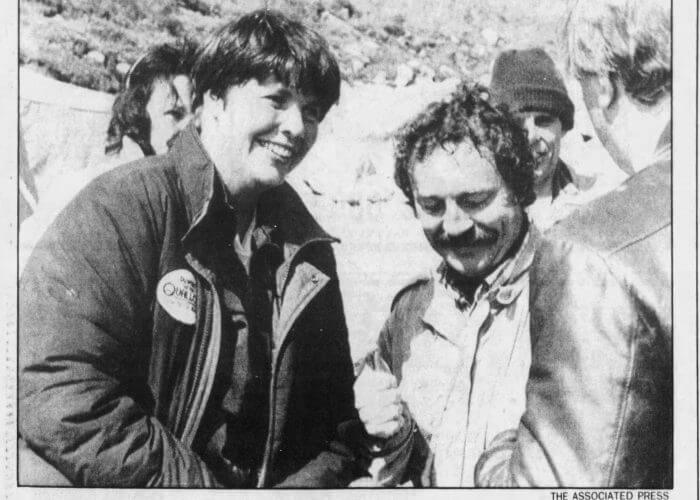30 Years Ago Today: How Lynne Cox Eased Cold War Tensions by Swimming

By Bruce Wigo.
In 1987, Lynne Cox convinced Mikhail Gorbachev to let her swim across the Bering Strait between the U.S. and the USSR. In doing so, she demonstrated to both superpowers how close their people really were, and helped to thaw Cold War relations.
In the middle of the Bering Strait, the 2.7 miles between the Diomede Islands – Soviet Big Diomede and Alaska’s Little Diomede – was coined the “ice curtain.” To this day, it’s the only border Russia shares with the U.S. It overlaps with the International Date Line so that the difference between these two countries is literally night and day.

Photo Courtesy: ISHOF Archives
For more than 40 years, no citizens from either country were permitted to step onto the rocky shores of Big Diomede. Before a shift in Soviet and U.S. policy in 1948, indigenous Inupiat tribes had been hunting, fishing, and moving between these islands for thousands of years. But as Cold War tensions rose, native people were stripped of their lands, traditions, and the friendships they had made across the border, as Big Diomede was turned into a Soviet military reservation.
In 1971, at the age of 14 Lynne Cox swam across the Catalina Channel, and at 15 and 16 she made record breaking swims across the English Channel. In 1975, she also became the first woman to cross the Cook Strait,in New Zealand. The next year she became the first person to swim the Straits of Magellan, and the first to swim around the Cape of Good Hope in South Africa. It was after these swims that she envisioned swimming across the Bering Strait, from Little Diomede, Alaska,USA to Big Diomede, Siberia, USSR. But first, Lynne had to receive special permission from the Soviet government. Over the course of 11 years, she wrote to four different Soviet leaders: Leonid Brezhnev, Yuri Andropov, Konstantin Chernenko, and Mikhail Gorbachev. Her only response came from the latter.
On Aug. 7, 1987, 30 year-old Lynne jumped into the icy water off Alaska’s Little Diomede and swam towards the Soviet border. In addition to making athletic history, her swim was largely for scientific purposes – so that a research team could examine her body’s reaction to cold water. At the midway point, a 20-foot Soviet vessel joined her escort boats.

Photo Courtesy: ISHOF Archive, LA Times
Although the distance was only 2.7 miles Lynne had to swim over five miles for two hours and five minutes as her hands turned grey and her limbs stiffened in the 38 degree water. Not only was she the first person to accomplish this daring feat, she succeeded in bringing the Soviets and Americans closer together.

Photo Courtesy:ISHOF Archive – AP photo
When she finally reached the shore, Lynne was warmly greeted by about 30 Russians including regional government officials, members of the KGB, and Soviet Olympic athletes. They escorted her to a platform where a picnic had been prepared, with samovars of tea and biscuits, and presented her with flowers and a pair of handmade slippers. As Lynne answered journalists questions she started cooling down and was about to go into afterdrop-hypothermia when a Soviet doctor, Rita Zakharova, led her into a charcoal-heated tent and covered her with hot water bottles and a sleeping bag. Then, remarkably, the doctor herself embraced Lynne to warm her. “To have this human contact,” said Lynne in an interview with the BBC, “after so many years growing up afraid of the Soviets – and here was this person basically warming me up to get me back to life again.” As a special surprise, the Soviets invited Inupiat natives to the gathering where they sang folk songs as Lynne recovered.A treaty of friendship.
Thirty years ago today and four months after her historic feat, the U.S.A. and the USSR reached an agreement to eliminate their short and intermediate-range missiles on December 9, 1987. During the ceremony, which took place at the White House in Washington, Gorbachev asked President Ronald Reagan and everyone else in attendance to lift their glasses for a toast:
The Aftermath of Lynne’s Swim
“Last summer it took one brave American by the name of Lynne Cox just two hours to swim from one of our countries to the other. We saw on television how sincere and friendly the meeting was between our people and the Americans when she stepped onto Soviet shore. She proved by her courage how close to each other our peoples live.”

Photo Courtesy:
Not only is Lynne an accomplished open water swimmer, she is a New York Times best selling author and highly regarded motivational speaker. She has called her Bering Strait swim- “the most significant experience of her life.”



